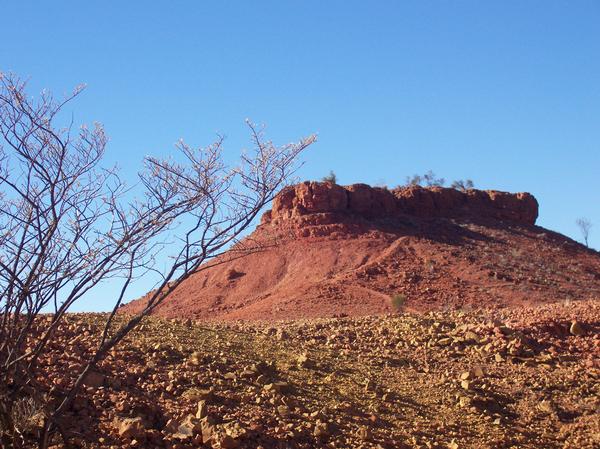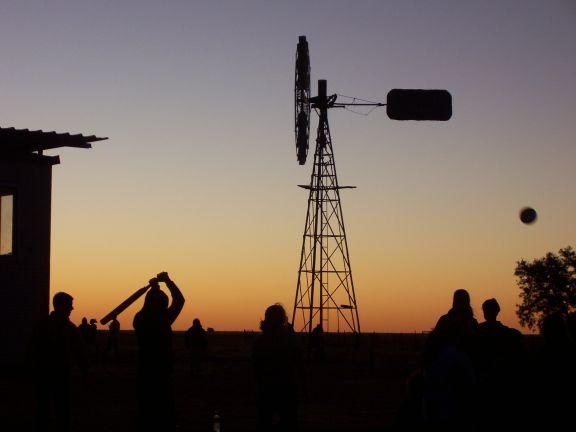




Aboriginal Settlement
The first Aboriginal voyages to the continent are believed to have originated in Indonesia some 50,000 years ago. Theirs is a rich, tribal culture with many myths and stories creating an egalitarian and ecologically aware society that thrived for thousands of years. It is estimated that at the time of European arrival, there were more than 250 Aboriginal tribes each with their own linguistic dialect and cultural identity. However, there were a few basic cultural beliefs that transcended tribal differences, including kinship with the earth, belief in the Dreamtime as the source of creation, and a semi-nomadic lifestyle.
Each tribe had rituals and oral traditions celebrating their heritage and their territorial lands. The land provided the Aboriginal people with food, shelter, and implements for hunting and gathering. Additionally, the land was an essential part of their belief system. The Aborigines believed that the spirits of their ancestors dwelled in various sites on the territorial lands. They also used Ochre, a mineral dug from the earth, colored varying shades of yellow, orange, and red to decorate their homes, weapons, bodies, and ceremonial paintings.
Another common thread uniting the diverse Aboriginal clans was their belief in the Dreamtime. The Dreamtime was believed to be the time when all things, including people, animals, and plants were created. The Dreamtime was the mythology that answered all the unanswerable questions such as: "Where did we come from?” It also allowed the Aborigines to express their belief that there was a great plan in which each living thing played an essential role.
The semi-nomadic lifestyle of the Aboriginal people, which the European settlers wrongly viewed as a lack of civilization and a lack of intelligence, is a true measure of the Aborigines’ sophisticated understanding of their natural environment. The Aborigines did not form an agrarian society because it was never a necessity for their survival. The Australian environment provided the Aborigines with abundant game, fish, and fruit. The Aborigines used their intimate knowledge of the environment to take advantage of all of nature ’s resources, enabling them to endure hardships and thrive even in the harshest Australian climates. In fact, the Aborigines lived and even thrived in regions the Europeans considered uninhabitable. When the European settlers began to take over the land, the Aborigines were not organized or aggressive enough to resist the oncoming domination. The Aborigines were slaughtered in wars over their land and for sport. They were decimated by disease and the loss of their ancestral lands.
Under European control, the Aboriginal people were expected to forsake their heritage and assimilate. Starting in 1918 and continuing well into the 1950s, Aboriginal children were taken from their homes and families and placed on missions or in white foster homes where they were forced to take on European ways, religion, and customs. Aboriginal languages were forbidden, and they were forced to farm the land just as the white settlers did. This generation of children, referred to as the “Lost Generation,” was almost totally stripped of their heritage. Many customs, ceremonies, and beliefs were lost, as were many Aboriginal languages. This is similar to the treatment of Native Americans by early Americans moving West in the U.S.
Beginning in the 1960s, awareness of the appalling injustices suffered by the Aborigines began to dawn, and efforts were made to restore Aboriginal cultural and economic rights that had been taken away during the previous centuries. Today their culture has started to rebound, and there is a growing sense of pride and identity among tribal peoples. A new generation is learning the languages of their forbearers. One of the strongest signs of this is in the area of Aboriginal art. There are some beautiful and stunning modern examples of the ancient arts of rock carving, bark painting, and ground designs. Most art represents Dreamtime. These ancient beliefs provide the basis for much of modern Aboriginal art.
European Settlement
Most people think the tale of European colonization began with Captain James Cook in 1768. However, the Portuguese may have sighted land as early as the mid-1600s.The earliest explorer of the West Coast is believed to be Abel Tasman. The Dutch Tasman discovered the island he named Van Diemen ’s Land, now known as Tasmania, in the 1640s. The first European to set foot on the continent of Australia was Englishman William Dampier, a pirate who was impressed only by the harshness of the land and the “wildness ” of its inhabitants. This left Australia largely undisturbed until Captain Cook sailed into history on his scientific voyage aboard the Endeavour in 1768. Cook found the Great South Land a place of immense interest, recording detailed and precise information in his journals. These journals are still very interesting to read today. It was Cook and his crew who sailed into what became Botany Bay.
The state of New South Wales, which encompasses the area surrounding Sydney, originally served as a British penal colony. The first shipload of “transports ” sailed into Sydney Cove in 1788. Often these original prisoners were being punished for minor offenses, or were Irish political prisoners. It was these convicts, and the military regiments who guarded them, who were primarily responsible for the European colonization of Australia. By the early 1800s, the colonists were developing agriculture in an effort to become self-sustaining and ward off the threat of starvation. However, it was the discovery of gold in 1850 that truly transfigured the country and its inhabitants. Willing immigrants from England and Ireland, as well as China, flooded into the port at Melbourne at upwards of 1,800 people a week. The rush for gold led to few millionaires in the end, but it did create a stable base for the economy, as other metals were exported to feed England’s Industrial Revolution. Much of Australia ’s unique folklore grew from the stories and songs that expressed the character of this boisterous period.
The information found on this webapge is from the online source, Wikipedia, and is not mine.

